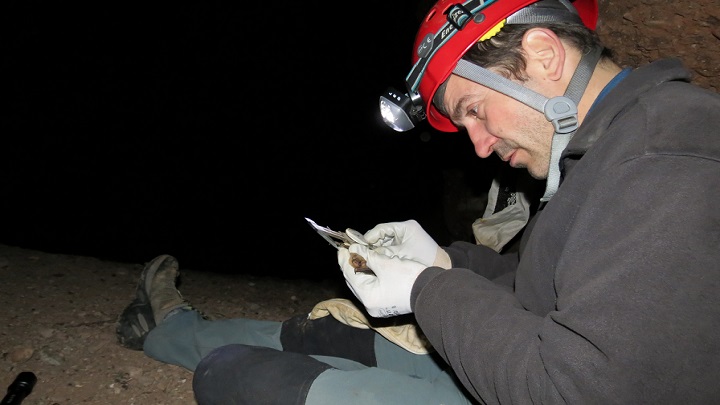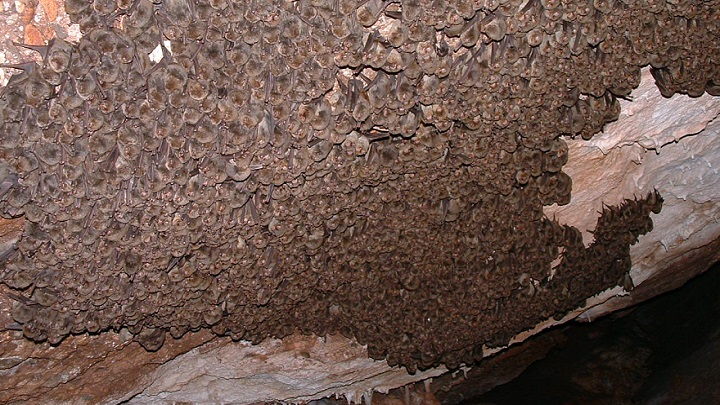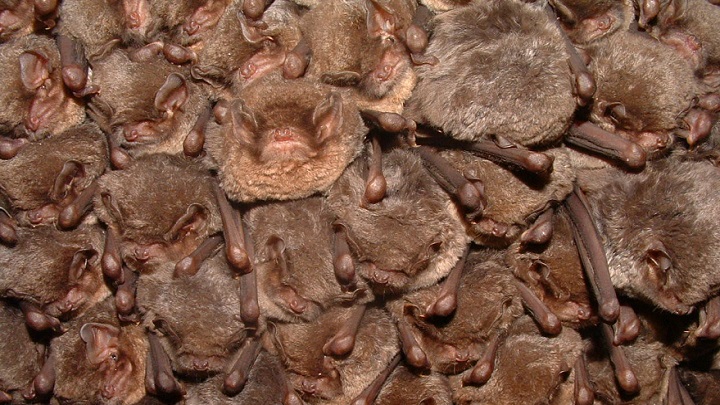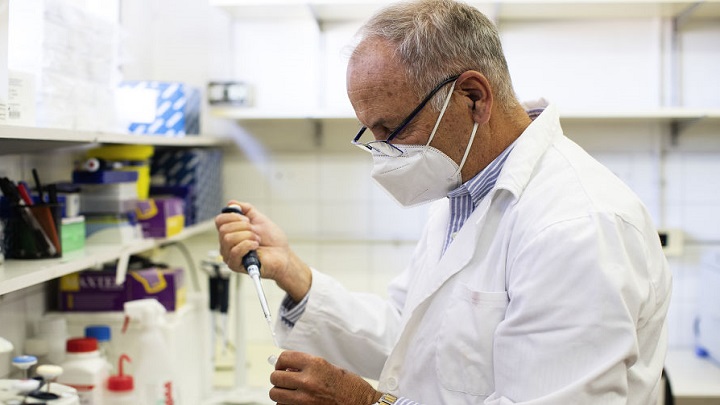Global warming is affecting bats’ hibernation

Global change is altering the physiology of the hibernation and behaviour of bats, according to a study led by the University of Barcelona, carried out for twenty years. Given the milder winters we are having, bats are accumulating less fat reserves in autumn, they shorten their hibernation periods and they leave their winter shelter sooner. These changes could alter the migration pattern of bats and the phenology of their seasonal displacements. The study has been conducted on the largest colony of bats in Catalonia, in the Natural Park of Sant Llorenç del Munt i l’Obac. It is formed by 17,000 common bent-wing bats (Miniopterus schreibersii), a migratory species that lives in big colonies, especially in winter.

Global change is altering the physiology of the hibernation and behaviour of bats, according to a study led by the University of Barcelona, carried out for twenty years. Given the milder winters we are having, bats are accumulating less fat reserves in autumn, they shorten their hibernation periods and they leave their winter shelter sooner. These changes could alter the migration pattern of bats and the phenology of their seasonal displacements. The study has been conducted on the largest colony of bats in Catalonia, in the Natural Park of Sant Llorenç del Munt i l’Obac. It is formed by 17,000 common bent-wing bats (Miniopterus schreibersii), a migratory species that lives in big colonies, especially in winter.
The study, published in the journal Scientific Reports, is signed by the experts Marc López-Roig and Jordi Serra-Cobo, from the UB’s Faculty of Biology and the Biodiversity Research Institute (IRBio), and Eduard Piera, from the Government of Catalonia.
Adapting to milder and shorter winters
It seems bats are adapting to a warmer climate, with milder and shorter winters. In temperate latitudes, bats accumulate large amounts of fat reserves during autumn to face the hibernation period, which usually runs from mid-December to late-February.
“The fat reserves they accumulate should be large enough to survive the whole winter without eating. However, due to shorter winters and higher temperatures, bats are not fattening up in autumn as they used to do years ago, because they do not need that much fat to get through the winter”, notes Professor Jordi Serra-Cobo, from the UB’s Department of Evolutionary, Ecology and Environmental Sciences.
These changes in the body mass are clear in both sexes, although female bats show a lower body condition than males, both at the beginning and at the end of hibernation and during the activity period (March). “This fact could have an effect on the reproduction of the species, since a poor body condition in females could negatively affect gestation and lactation. However, in our latitudes, female bats have enough time between the end of hibernation and the beginning of reproduction to recover their weight and have an optimal body condition for hibernation”, says Marc López-Roig.
Hibernating in warmer caves
Global change is also affecting the bats’ arrangement in their winter shelter. “The colony of bats was usually located in the deeper chamber —continues the expert —, located sixty-five meters deep, with a relatively constant temperature — around 7ºC — during the months of December and January”.
“The study states that the hibernation chamber takes longer to cool down compared to previous years. This delay affects bat hibernation because they do not find the optimal temperatures to hibernate until late January or early February. Therefore, these animals look for colder spaces near the entrance of their winter shelter and are exposed to a higher risk of predation (for instance, by genets)”, concludes Marc López-Roig (UB-IRBio).
Changing migration routes
With a shorter hibernation, bats start their activity earlier (compared to other years): they start their migration route and they reach their spring destination sooner. If there is any cold wave once the spring arrives, bats may not be ready to face low-temperature periods. These changes could have consequences in the conservation and management of the species. “The migratory routes and the seasonal movements of bats are well-documented in Catalonia. Recently, many new places in these routes have been found, but other important shelters have been lost or altered”, notes Serra-Cobo.
For instance, the increase in temperatures prevented bats from hibernating in the provinces of Tarragona. The loss of this shelter as a hibernation place altered the migration of this species and it also altered some migration routes in the south of Catalonia.
How will it affect pest control in the environment?
Global change could also alter the ecological function of chiropterans, which are decisive for the pest control of insects and disease-vector species in the environment. How might these changes affect their preys’ life cycle?
“Everything indicates that the phenology of certain insect species has also advanced with the global warming. This would coincide with the end of bat hibernation, so the impact of a shorter hibernation would be lower if these two situations were synchronized”, note the authors of the study.
All chiropteran species could be affected by the climate change, but the magnitude of the impact could be very different among groups of bats with different biogeographical patterns. “Mediterranean species, adapted to climate conditions with higher temperatures, may be less vulnerable to climate warming compared to species from northern or boreal latitudes,” says the team.
Reference article:
López‑Roig. M.; Piera, E.; Serra‑Cobo, J. “Thinner bats to face hibernation as response to climate warming”. Scientific Reports, January 2024. DOI 10.1038/s41598-024-52459-9.
Multimedia gallery

Bats are adapting to a warmer climate and milder temperatures. Photo: Marc López-Roig

The study describes changes in the length of their hibernation, the body conditions and their migration patterns. Photo: Marc López-Roig

